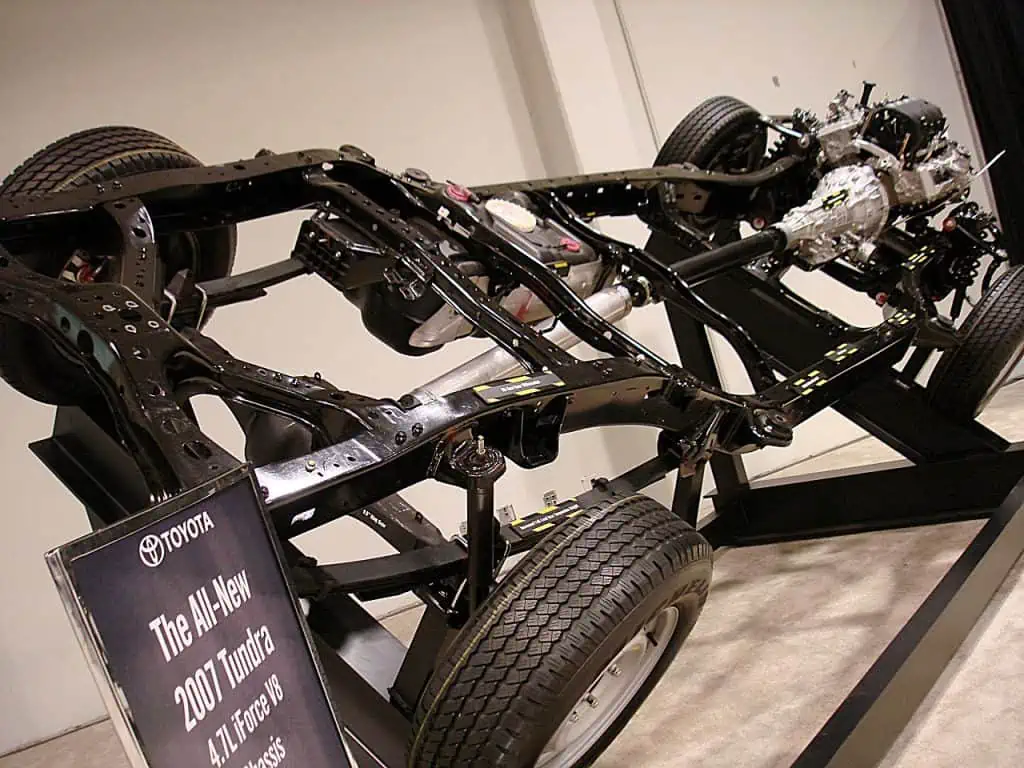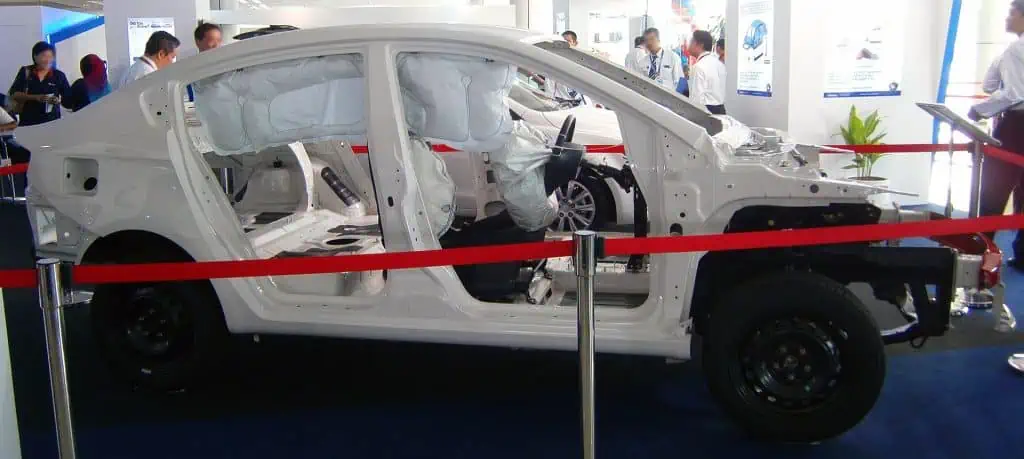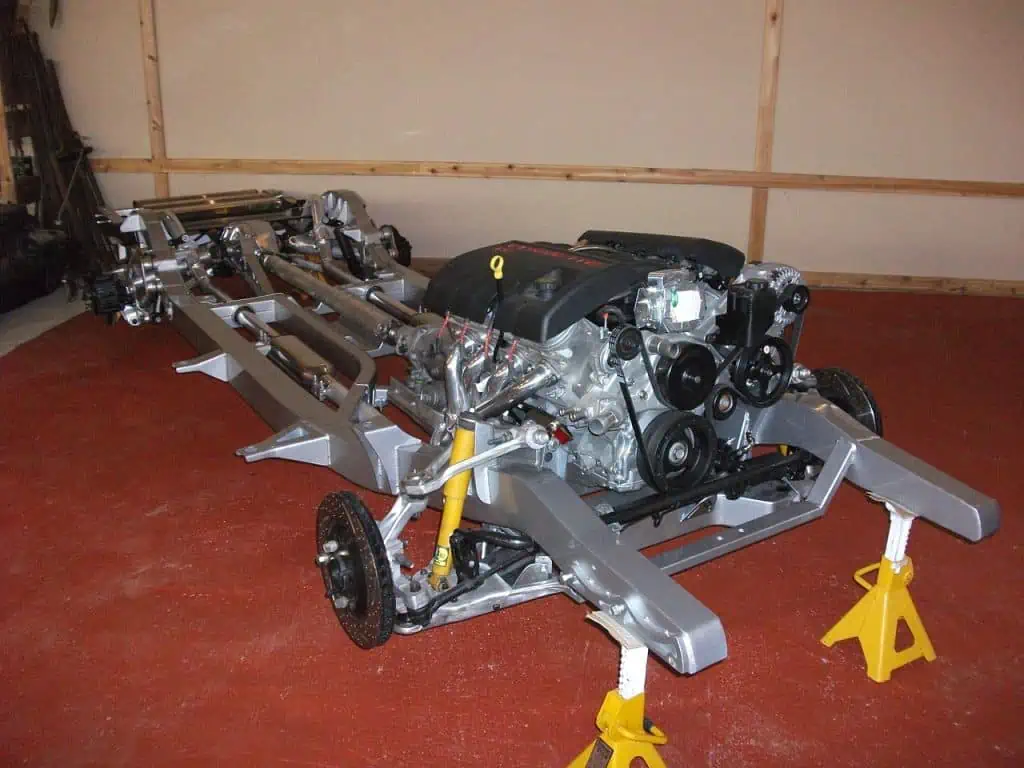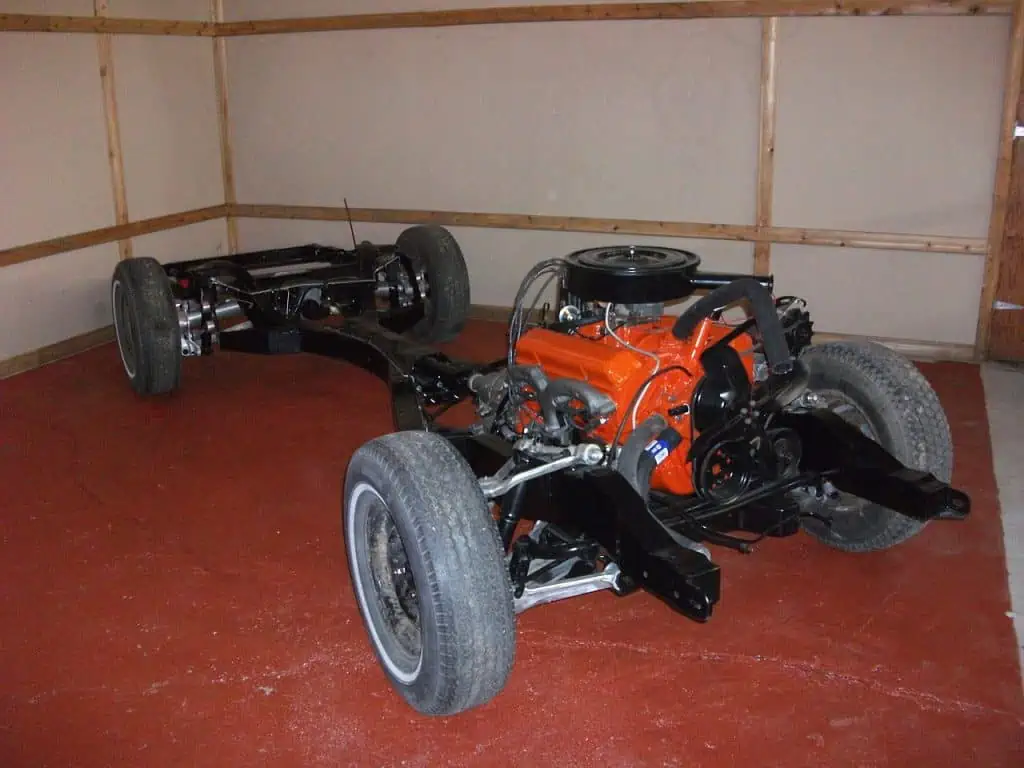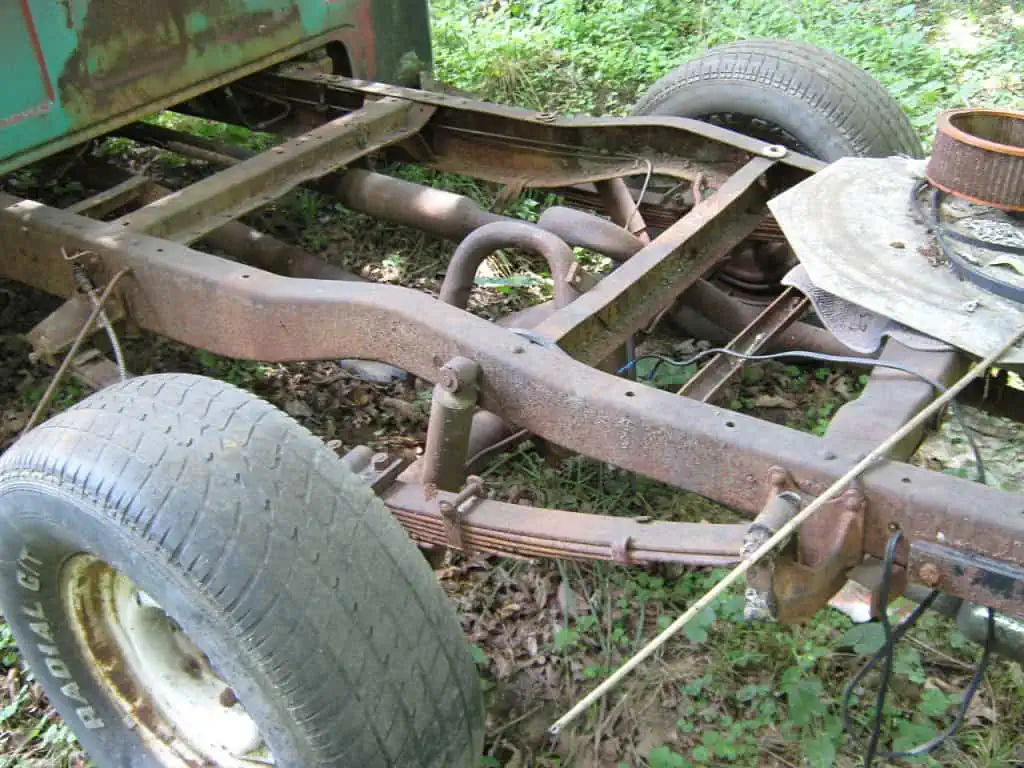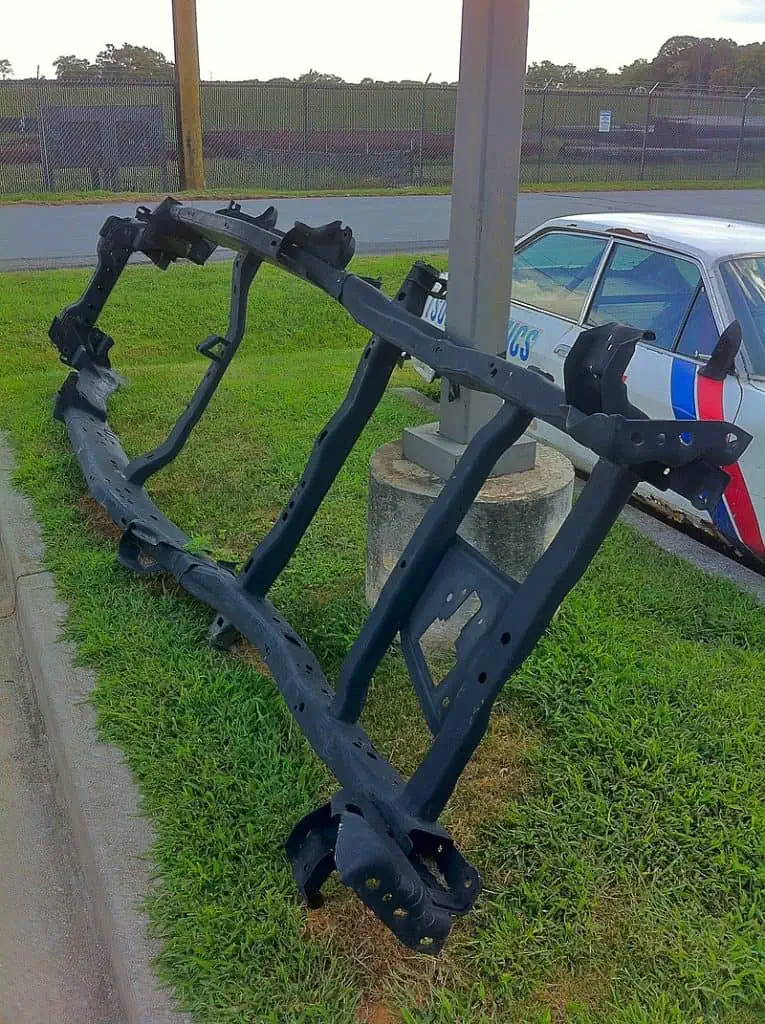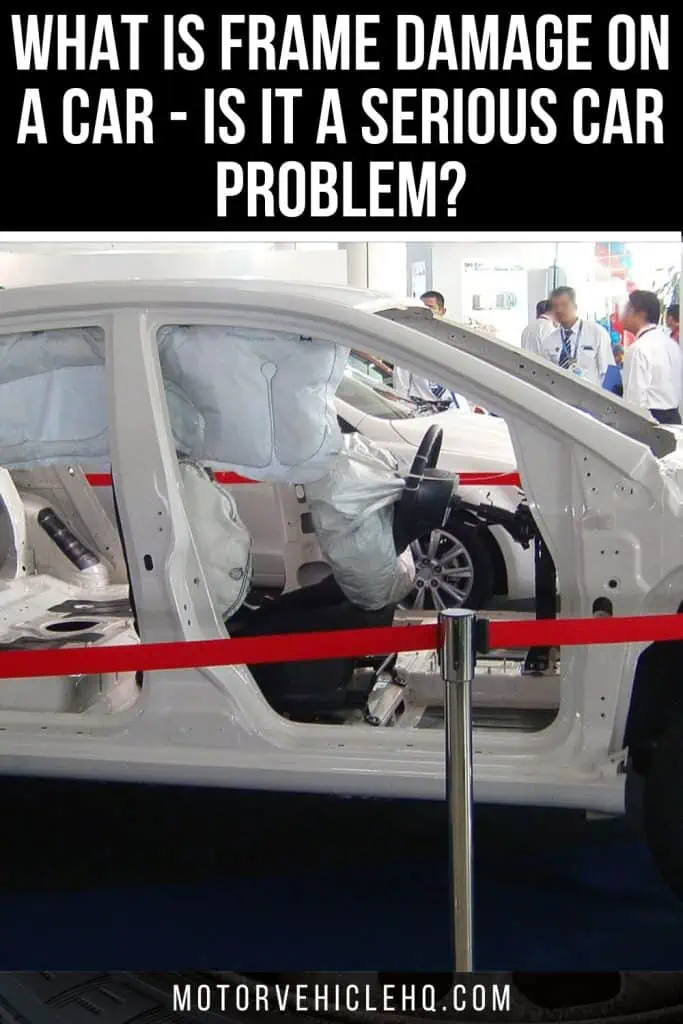Have you lately been involved in an automobile accident and are wondering “what is frame damage”? And what if this collision has affected the strength of your car’s frame?
Answering this question is challenging. But, we’ll do our best in this article to provide the response you sought.
It can be frustrating to deal with a damaged car. That’s especially true if you don’t know what constitutes a vehicle with a damaged frame.
If your automobile is totaled in this situation, you could not even receive enough compensation from the insurance. Knowing if your car is worth being written off on is important for this reason. If the damage your car has sustained is fixable.
By being aware of this, you can express your opinion and sell your wrecked car for more money. Buying a car with frame damage is another issue. Project vehicles are popular and are often purchased through Copart.
But regrettably, they have no idea what they are entering into because the majority of the automobiles have structural or frame problems and are difficult to repair. So don’t worry—we’ll explain everything, so don’t be concerned.
What frame damage will be discussed in this article. After that, we’ll go over the typical frames used in cars and trucks. Then we’ll talk about what constitutes frame damage to a car. Finally, we’ll talk about what can be repaired and what can’t. So, let’s talk.
Which are the Common Types of Frames Seen In Cars and Trucks?
In cars and trucks, there are two standard frames. A body-on-frame and a unibody frame are these. How can I distinguish between the two?
One can easily tell the other apart from the other. The term “body-on-frame” refers to the mounting of the car or truck on a sturdy frame. Two extremely strong beams that are joined together with metal bars form this sturdy frame.
Since the beginning, body-on-frame construction has been used to create all cars and trucks. But as time went on, technology advanced significantly. Thus, the automotive industry has shifted to unibody designs to provide lighter and safer cars.
Ladder frame pickup truck chassis by Liftarn / CC BY-SA 2.0. The mounting of the car or truck on a strong frame is referred to as “body-on-frame” This sturdy frame is made of two exceptionally strong beams that are connected by metal bars. All automobiles and trucks have been built using body-on-frame technology since the beginning. But as time passed, technology made considerable progress.
The frame and frame rails are integrated into the body of the vehicle, as the name “unibody” suggests. Two crash supports are located at the ends of the rails, one at the front and one at the back.
The unibody architecture for cars was a significant shift. Heavy pieces of machinery like semi-vehicles and pickup trucks continued to use the body-on-frame design at the same time.
This is true since the performance of these vehicles depends on a sturdy structure. A semi-truck with an aluminum unibody frame will eventually break and fall apart. In the same way, pickup trucks operate.
They require a larger frame to support the body in all circumstances and under all loads because they are quite lengthy. Where the body meets the bed, it will collapse if there is not a large, sturdy frame underneath.
We can now talk about frame damage because we have defined the two types of frames.
What Is the Unibody Safety Process?
As we previously stated, cars used to be constructed using a body-on-frame method. These frames were incredibly strong and long-lasting.
They were strong enough to survive a powerful frontal blow. More important, though, is the lack of impact absorption in this design.
If you have an old body on a new frame car and you get into an accident, your frame will probably be damaged, and your health may suffer long-term repercussions.
Because the rails are the only item at the front to absorb the impact in the event of an impact, nothing else.
Many argue that these older cars are constructed like tanks. These antique cars will be essentially destroyed by the impact if they are in a frontal collision with a new vehicle.
Although having a frontal crash structure, new cars will only experience a modest impact, protecting the occupants significantly more.
This is true since current automobiles feature crumple zones. These areas are intended to crumple and take the impact. The crumpling will deflect the blow and stop further harm to the frame.
This indicates that the car will be fixable. Several older body-on-frame cars will be considered if their frame was destroyed, so it won’t be a total write-off.
The benefit of the unibody design is that increased safety and economic recovery following the crash. The car could likely have been driven safely back into the road if it had crashed at a moderate speed.
This is because only the crumple zone will need to be changed, leaving the car’s body intact and safe.
What Is the Process for Body-On-Frame Safety?
Compared to unibody construction, body-on-frame safety is significantly inferior. As we previously stated, “body-on-frame” refers to the mounting of the car’s body on top of a rectangular frame.
Since the solid structure is built of high-strength steel, it is incredibly hefty. Because of the significant body roll, this has an impact on the car’s ability to drive. On corners, this body roll is particularly noticeable. You will immediately note how the car’s body leans to one side.
Moreover, general safety is poor. Due to the frame’s incredibly low mounting, both frame components move in different directions in the event of a significant impact. They just cannot take the blow, and the frame damage is too severe to be repaired.
The unibody for the unitized body by Aero7 / CC BY-SA 2.5 my. As the name “unibody” implies, the frame and frame rails are incorporated into the vehicle’s body. The ends of the rails have two crash supports, one in the front and one in the back. A notable change in automotive design was the unibody architecture. The body-on-frame construction was still used in heavy machines like semi-trucks and pickup trucks at the same time.
Not to mention that the driver is not protected when the frames move in various directions. And in the event of a severe frontal collision, the steering column will absorb the impact at the front, instantly killing the driver.
Body-on-frame automobiles are completely unsafe, and even in the 1960s, they were abandoned. Nonetheless, they were still being made up until recently. The Ford Crown Victoria, which was produced in 2011, was the final vehicle with this body-on-frame construction.
But, the situation with trucks is different. The beams on pickup trucks and semi-trucks are substantially heavier than they were on earlier models of cars. They are therefore safer and sustain less frame damage in collisions.
Although they experience the same effects as vehicles with this design in more severe collisions, which include significant frame damage and total loss of the vehicle.
Frame Damage In a Car: What Does This Mean?
Any damage to a section of the car meant to support its structural integrity is referred to as “frame damage.” Typically, outside events like collisions or maintenance lead to this damage.
When a vehicle’s structural support is compromised, it may become unsafe to drive or endanger other components that the frame supports. These possible risks can subsequently jeopardize passenger security, rendering the vehicle unfit for a driver to operate.
Depending on the extent of the damage, different levels of frame damage can happen. Any injury to the car body that does not immediately impact the major structural support of the vehicle is referred to as minor damage.
These can include items like dents in the exterior panels or paint scrapes. Any damage that jeopardizes the primary structural support, such as bending beams, crumpled panels, or jeopardized alignment support, is referred to as major damage.
The crumple zones are one part of the car frame to take into account while determining frame damage. These zones are frequently found at the front or rear of the car and are intended to protect passengers in the case of a collision.
The zones are designed to crumple or fold in response to kinetic energy during a collision, shielding passengers and ultimately reducing the rate of passenger fatalities.
Damage to the Body-On-Frame
When referring to body-on-frame automobiles, frame damage is defined as severe damage to the vehicle’s metal support beams.
Imagine that despite a frontal collision, just the front bumper and fascia were harmed. In most circumstances, this isn’t regarded as a car with a damaged frame. This is due to the rectangle frame being made entirely of one piece.
This implies that everything that is broken will be changed. The car can therefore continue to be driven on the road but will still have a salvage title. This is because the body was damaged.
You shouldn’t have to worry if your truck receives the label of frame damage if the metal frame is intact. The vehicle’s rear is subject to the same regulation. The car has frame damage if the frame from the back is bent. The car is not regarded as having frame damage if the frame is sound.
In unibody automobiles, however, things are entirely different, and we will talk about them in the following chapter.
Damage to the Unibody Frame
As we previously stated, unibody frames have a unique design. Several parts of these frames are susceptible to damage, and the vehicle may be labeled as having frame damage.
Due to this, a unibody frame car is simpler to complete than a body-on-frame vehicle.
High-performance custom frame by dave_7 / CC BY 2.0. When a vehicle’s frame is weakened, it may become dangerous to drive or put other parts that it supports in danger. These potential dangers may subsequently threaten the safety of the passengers, making the car unsafe for a driver to operate. Several levels of frame damage may occur depending on the severity of the damage.
The body of a unibody car is all one piece, so if any of the following are damaged, the car can be declared wrecked and given a salvage title.
So, which areas of the frame can be damaged without causing the automobile to be considered wrecked, and which ones cannot? Let’s investigate.
The Core Support Damage
The front of the vehicle houses this area. This fundamental support is a sizable house structure. The front bumper, radiator, and headlights are all housed on this central support.
It is not a total loss when this essential support is harmed, and this kind of damage is not regarded as frame damage. This is so that the frame rails might still be in excellent condition.
Bar for the Frontal Crash
The front of the car is where the frontal crash bar is situated. On the front frame rails, it is bolted. This crash bar was created with frontal impact absorption in mind. It is constructed so that it will collapse if the front of the automobile is struck.
This heavily relies on the effect. The car wouldn’t be considered totaled if the crash bar was broken and the frame rails were still in good shape and weren’t bent or twisted. This is true since there is no frame damage and the crash bar is not regarded as a component of the frame.
Bar for the Rear Crash
The rear crash bar functions similarly to the frontal crash bar in the event of a rear hit. The crash bar is not deemed to have sustained frame damage if it merely twists.
Let’s assume, though, that the tub and the back of the car are both shoved within, shattering every piece of metal there.
If so, frame damage is deemed to have occurred. And this is the kind of damage you want to avoid fixing. Because fixing this damage will require a lot of work, time, and money. Both the rear frame rails and the rear tub need to be replaced.
The Rear and the Front Frame Rails
The front and rear frame rails are an element of the unibody frame, as suggested by their names. Moreover, frame damage refers to any tinkering or bending of these frames.
As you open your hood, you will see two metal tubes sticking out from the front on the left and right sides. This is how you can identify these rails.
The frontal frame rails are these two rails. They are made to withstand impacts. And when hit, they break apart and prevent the blow from entering the firewall.
The vehicle can be fixed and these frame rails replaced. Also, if everything is done correctly, the car won’t have any problems in the future. But if the fix was done incorrectly.
The frame rails would not withstand the same amount of force as they were designed to in a fictitious future accident or crash.
Consider the frame rails and if the repair was done correctly if you attempt to purchase a salvaged vehicle with new frame rails.
Rolling X frame chassis by dave_7 / CC BY 2.0. As implied by their names, the front, and rear frame rails are a component of the unibody frame. Moreover, any fiddling or bending with these frames is considered frame damage. Two metal tubes protruding from the front on the left and right sides can be seen as you open your hood. These rails can be recognized in this manner.
Damage to the Frame of Strut Towers
The strut towers, as their name suggests, support the front struts. This damage, if it occurs, is referred to as frame damage. The wheels cannot rotate properly if they are not in good condition.
Therefore, when an automobile has damage to the strut tower, it also has frame damage. Struts can fortunately be fixed. Yet for the car to function effectively and for the geometry to remain intact, it must be fixed properly.
The Rocker Panels
After the front wheel and before the door are where you’ll find these panels. They maintain the door’s position. If these rocker panels start to deteriorate. The fact that the door wouldn’t close qualifies as critical damage, which is capable of easily totaling a car.
This is the case because the firewall, the rocker panel, and the strut towers are all connected by a substantial amount of metal in this particular area. The whole thing needs to be changed. Yet for many people, coping with this kind of damage can be a hassle.
Since it includes essential components important to the overall safety of the vehicle, damage to this area is regarded as frame damage when it occurs to an automobile.
Everything can be fixed, however, it is quite challenging to fix these parts once they have been damaged. Also, if you’re looking to buy a wrecked car, you should avoid those with this kind of structural damage. Because you might come to regret it.
The Firewalls
Frame damage also includes damage to the firewall. This solid part beams the vehicle for destruction. If there is an impact, the majority of the damage is repairable. Nonetheless, the car will likely be written off if the firewall is damaged.
This is true since a car’s firewall is a necessary component when it needs to be rebuilt. The firewall has all the crucial components that must be in place for the repair to be successful.
if the firewall’s alignment is off. Then, fixing this car will be difficult. The best course of action is to steer clear of a car with a damaged firewall and move on to the next one. It is not worthwhile to fix this frame damage.
The Quarter Panel
At the back are the quarter panels. These aesthetic panels resemble the front fenders in appearance. Since they are not in any way in contact with the frame, they are not regarded as frame damage.
The rear strut towers and the metal behind the quarter panel, however, can be regarded as having sustained frame damage. The car’s structure has been damaged if this metal has been tampered with or bent.
Also, a car is regarded as having frame damage if it was rear-ended, the back was pushed, and the door gaps are out of alignment. Due to the pushing forward of all the underlying components.
It’s a challenging process to repair this, and I don’t believe many people can do it. Because of this, avoid buying a car like this if you’re seeking a quick rebuild.
Pillars A, B, C, and the Roof
Further important parts of the car that ensure the safety of the occupants are the pillars and the roof.
The Lamborghini Aventador’s front and rear steel subframes by J.Smith831 / CC BY-SA 2.0. These two rails make up the frontal frame. They are constructed to withstand blows. Also, when struck, they disintegrate and stop the impact from entering the firewall. These frame rails can be changed after the car has been repaired. Also, the car won’t have any issues in the future if everything is done correctly. However, if the fix was executed improperly.
Also, they are very difficult to fix, particularly if the car was engaged in a rollover. While being challenging to repair, they won’t make the car unrepairable.
After all, a replacement roof can be obtained from a different car. Even though it sounds easy, it can be challenging to install a new roof on a vehicle with a broken roof. That’s particularly true if the pillars are also damaged.
It’s possible to swap out just one pillar. The B pillars, which connect the vehicle’s doors and are in the center of the frame, are the trickiest pillars to build. However, a skilled framer and welder may readily solve this issue.
Under the Vehicle Frames
The most challenging frames are those. It’s also nearly impossible to straighten two vehicles that have been T-boned from the side; this is a clear example of frame damage that can render a car utterly unusable.
This kind of damage prevents a car from being useful for anything other than parts. The main structure is damaged beyond repair and is demolished.
Frame Damage on a Car: How Can I Tell If the Car Can Be Repaired?
Simply said, the cost of the repair indicates whether or not the car is repairable. The title for the vehicle is immediately changed to “salvaged” if it has structural damage. This results in a 30% decrease in the vehicle’s resale value.
If the cost of the repair exceeds these limits, the vehicle will be disassembled and sold for components.
The severity of the injury is another important aspect. These autos are given the designation of certificate of destruction if the body is carnage.
This implies that the vehicle cannot be put back on the road. Stay away from automobiles with rocker damage, pillar damage, firewall damage, rear tub damage, and a deformed rear.
The ones with frontal damage immediately in front of the firewall are the simplest to fix. Everything outside the barrier isn’t worthwhile. To extract the broken pieces and replace them correctly, all of these repairs must be done on a frame machine.
Checking for Frame Damage: A Comprehensive Guide
When deciding whether or not to call for a tow truck after a collision, you should first determine the extent of the damage your automobile has received. The car’s frame should be one of the first things examined.
Take a close look at the car from all sides after you exit the vehicle. You might be able to continue driving if the damage is only small (dings, scrapes, etc.).
You might need to contact a tow truck if the car has any evident crumples, large dents, or other damage that might prevent it from moving further.
A pickup truck frame by Flash176 / CC BY-SA 3.0. If a car was rear-ended, had its back pushed, and had its door gaps out of alignment, it is said to have frame damage. due to all the supporting elements moving forward. Repairing this is a difficult procedure, and I don’t think many people are capable of doing it. As a result, if you’re looking for a car to rebuild quickly, stay away from buying one like this.
Having an expert inspect the car after the accident will, of course, give a more precise idea of the extent of the damage.
If you decide to leave the scene in your car, pay attention to how it is driving.
There might be a major underlying problem with the frame if the automobile pulls to one side, starts to vibrate excessively, makes strange noises, or struggles to turn or stay stable at high speeds.
Take it right away to a collision repair facility to have the damage evaluated.
Does Damage to the Frame Jeopardize Driving Safety?
An automobile might still be drivable with only minor frame damage. On closer inspection, some damage could appear less severe, but when the automobile is driven, it may affect more elements of the vehicle. Passengers or other motorists may be at risk as a result.
The car’s capacity to keep you safe in the event of another collision is another factor to take into account. If the car has structural issues, it might not be able to offer the same level of safety in subsequent accidents.
It’s also critical to understand local rules regarding damaged vehicles. Some states forbid operating a damaged vehicle on the road, especially if it poses a risk to the driver or other motorists.
Bring your car to a collision repair facility as soon as possible following an accident. To make sure that your automobile is safe to drive and to stop any additional damage, qualified collision repair specialists will be able to rapidly determine the exact severity of your frame damage.
Vehicle Frame Damage and Repair Facts
The frame of a car is the vehicle’s structural support system. It is composed of steel or aluminum and is intended to hold all the mechanical pieces, the body, and the vehicle’s weight. It also serves to protect the inside of the car and the occupants in the event of an accident.
Unibody and body-on-frame designs, which are employed in various vehicle types, are the two primary forms of automotive frames.
An automobile’s frame is made up of various segmental parts that each support or protect a certain part of the car.
Frame damage is any damage to a vehicle’s components meant to support its structural integrity that is brought on by external forces, such as collisions or deterioration.
Depending on the extent of the damage, different types of frame damage might happen, from small damage to serious damage that jeopardizes the primary structural support.
An automobile might still be drivable with only minor frame damage. When the car is driven, some damage, however, may be more serious than it appears and may impact additional elements of the vehicle.
Driving a damaged automobile may be prohibited in some jurisdictions, especially if it poses a risk to the driver or other road users, therefore it’s crucial to be aware of the regulations in your area.
A ladder frame, named for its shape by CZmarlin / CC BY-SA 3.0. A car’s frame serves as the structural support structure for the vehicle. It is made of steel or aluminum and is designed to support the weight of the body, all the mechanical components, and the entire vehicle. In the event of an accident, it also serves to safeguard the interior of the vehicle and the passengers.
After a collision, perform a preliminary inspection of the vehicle to check for visible crumples, significant dents, or other noticeable damage that might impair motion.
If the vehicle pulls to one side, vibrates violently, makes strange noises, struggles to turn, or loses stability at high speeds, there may be a serious frame problem that needs to be evaluated right away by a collision repair facility.
Depending on the extent of the damage and the cost, car frame damage can often be repaired. The car is deemed “totaled” if the cost of restoring the damage exceeds the value of the vehicle.
The Conclusion
The frame damage problem has been extensively explored on this page. We gained knowledge of the many frame kinds and what frame damage is.
Finally, we discussed what constitutes frame damage for both a unibody and body-on-frame vehicle. We have also discussed every component that possibly is damaged, and we can conclude that the car has frame damage.
Finally, we have addressed the issue of what damage is and is not repairable. What kind of harm should you avoid when getting an automobile rebuilt, as well?
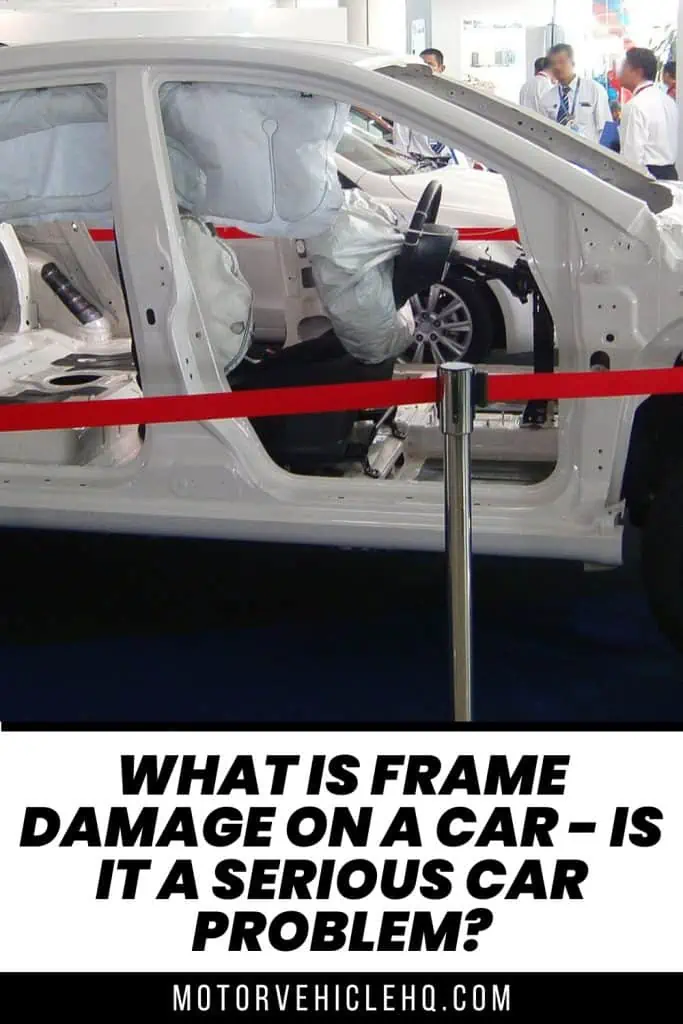
The unibody for the unitized body by Aero7 / CC BY-SA 2.5 my

Jim Wicks is the founder of MotorVehicleHQ. With over two decades of experience in the automotive industry and a degree in Automotive Technology, Jim is a certified car expert who has worked in various roles ranging from a mechanic, car dealership manager, to a racing car driver. He has owned more than 20 cars over the past 15 years. Ask him about any vehicle you see on the road and he can tell you the make, model and year. He loves the aesthetics of all things cars, and keeps his vehicles in pristine condition.
In his free time, Jim enjoys getting his hands dirty under the hood of a classic car or taking long drives along the country roads. His favorite car? A 1967 Shelby GT500, a true classic that, according to Jim, “represents the pure essence of American muscle.”
